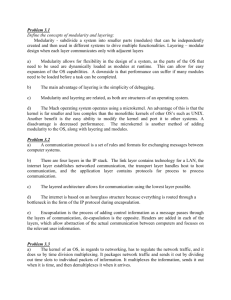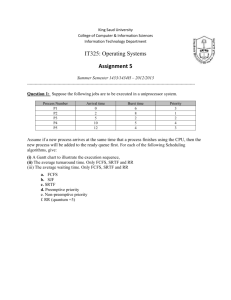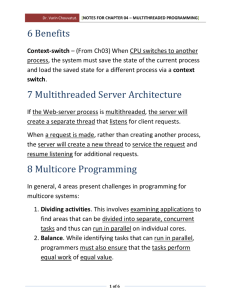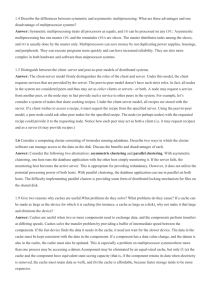useful kernel
advertisement
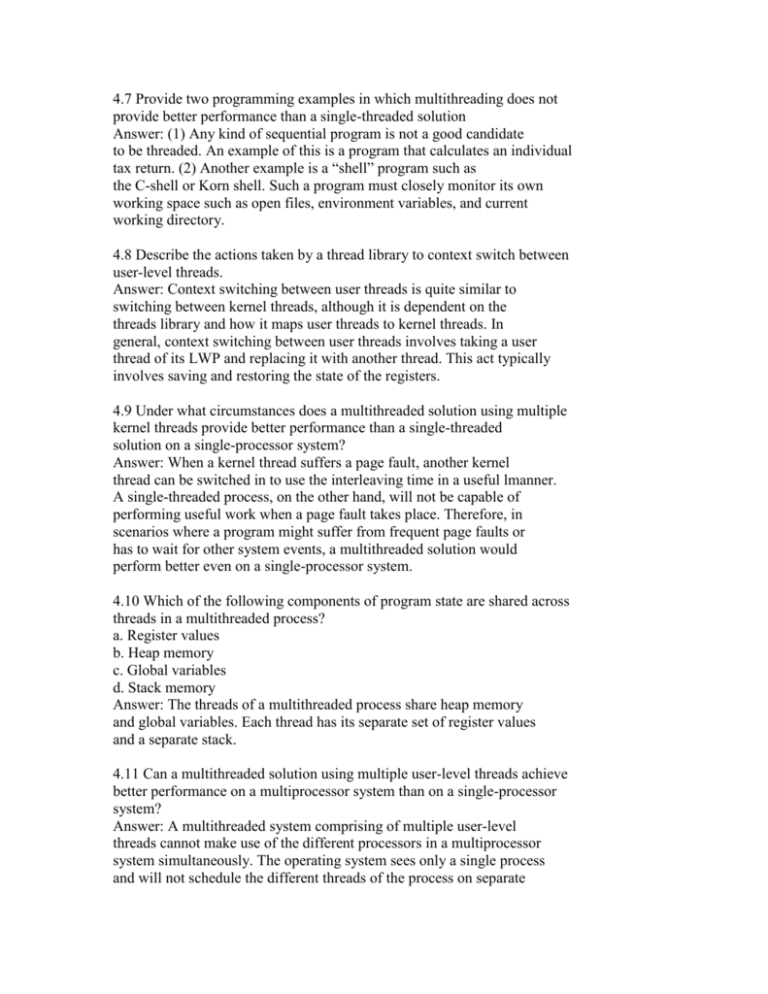
4.7 Provide two programming examples in which multithreading does not provide better performance than a single-threaded solution Answer: (1) Any kind of sequential program is not a good candidate to be threaded. An example of this is a program that calculates an individual tax return. (2) Another example is a “shell” program such as the C-shell or Korn shell. Such a program must closely monitor its own working space such as open files, environment variables, and current working directory. 4.8 Describe the actions taken by a thread library to context switch between user-level threads. Answer: Context switching between user threads is quite similar to switching between kernel threads, although it is dependent on the threads library and how it maps user threads to kernel threads. In general, context switching between user threads involves taking a user thread of its LWP and replacing it with another thread. This act typically involves saving and restoring the state of the registers. 4.9 Under what circumstances does a multithreaded solution using multiple kernel threads provide better performance than a single-threaded solution on a single-processor system? Answer: When a kernel thread suffers a page fault, another kernel thread can be switched in to use the interleaving time in a useful lmanner. A single-threaded process, on the other hand, will not be capable of performing useful work when a page fault takes place. Therefore, in scenarios where a program might suffer from frequent page faults or has to wait for other system events, a multithreaded solution would perform better even on a single-processor system. 4.10 Which of the following components of program state are shared across threads in a multithreaded process? a. Register values b. Heap memory c. Global variables d. Stack memory Answer: The threads of a multithreaded process share heap memory and global variables. Each thread has its separate set of register values and a separate stack. 4.11 Can a multithreaded solution using multiple user-level threads achieve better performance on a multiprocessor system than on a single-processor system? Answer: A multithreaded system comprising of multiple user-level threads cannot make use of the different processors in a multiprocessor system simultaneously. The operating system sees only a single process and will not schedule the different threads of the process on separate processors. Consequently, there is no performance benefit associated with executing multiple user-level threads on a multiprocessor system. 4.14 Consider a multiprocessor system and a multithreaded program written using the many-to-many threading model. Let the number of user-level Exercises 19 threads in the program be greater than the number of processors in the system. Discuss the performance implications of the following scenarios. a. The number of kernel threads allocated to the program is less than the number of processors. b. The number of kernel threads allocated to the program is equal to the number of processors. c. The number of kernel threads allocated to the program is greater than the number of processors but less than the number of user level threads. Answer: When the number of kernel threads is less than the number of processors, then some of the processors would remain idle since the scheduler maps only kernel threads to processors and not user-level threads to processors. When the number of kernel threads is exactly equal to the number of processors, then it is possible that all of the processors might be utilized simultaneously. However, when a kernel thread blocks inside the kernel (due to a page fault or while invoking system calls), the corresponding processor would remain idle. When there are more kernel threads than processors, a blocked kernel thread could be swapped out in favor of another kernel thread that is ready to execute, thereby increasing the utilization of the multiprocessor system.
